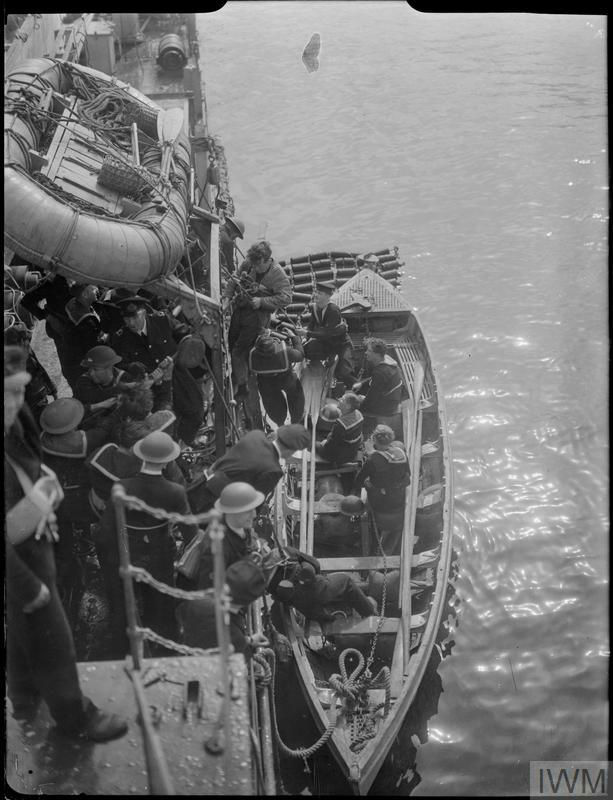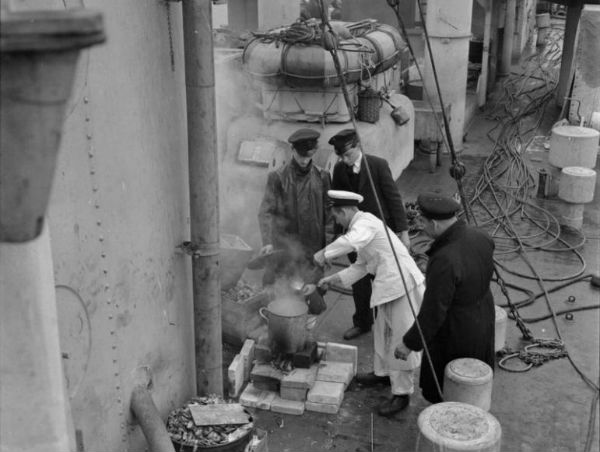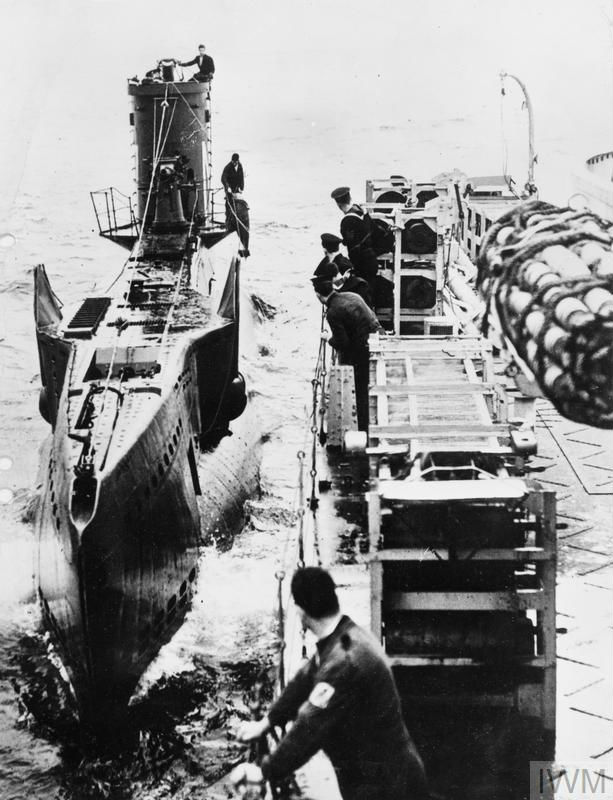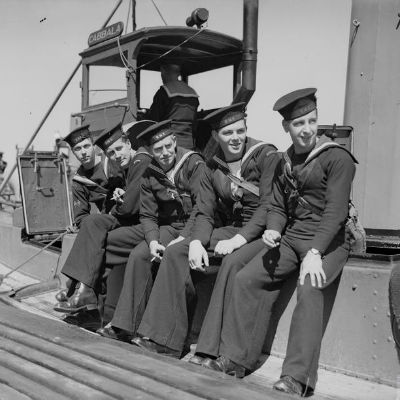A colourful patchwork of houses paints a peaceful portrait of Tobermory on the Scottish Isle of Mull. Once the location for the BBC children’s programme Balamory, the picturesque fishing harbour was a very different place in 1942 when Ordinary Signalman Brooks arrived.
During the opening months of the ‘phoney war’, combatants in the Battle of the Atlantic were gaining hard fought experience in how to win a war at sea. These lessons had to be passed on to the new ships rolling off the dockyard slipways and the thousands of new recruits, fresh from the Navy’s training establishments, who would crew them. To enable this learning, the Royal Navy needed somewhere safe from the enemy and free from adverse weather conditions to transform ships’ companies into efficient working crews.

In 1940, a location was found. With a headland sheltering the bay from South Westerly gales and Calve Island providing a natural breakwater to the east, Tobermory Bay was chosen as the site of the special training school HMS Western Isles. Set up by Admiral Sir Percy Noble, Western Isles was to be part of the Western Approaches Command and began receiving newly formed crews of Corvettes, Frigates, Sloops and Trawlers on an intensive two to three month course under the supervision of its new Commander, Vice-Admiral Sir Gilbert Stephenson.

Of all the officers trained at Tobermory 90% were RNVR (Royal Navy Volunteer Reserve) reservists, while the sailors under their command were mainly Hostilities Only ratings. Stephenson was quick to realise that the task of training these men required a different approach to that of training regulars. Training at Tobermory was rigorous and highly professional. It was the perfect preparation for crews going to sea for the first time. A literary depiction of Western Isles and Commander Stephenson is told in Nicholas Montserrat’s novel The Cruel Sea.
Accommodation was limited in such a sparse location so crews lived on their ships. Due to operational restrictions, any vessel given over to training had to be of a non-combat condition. The first HMS Western Isles was the passenger ferry Tynwald, built for the Isle of Man Steam Packet Company in 1891. As the demands on off-shore training facilities grew, the ferry was replaced with the much larger SS Batvia, built by Gourlay Brothers & Co. of Dundee as a passenger/cargo ship for the Batavier Line, and launched as Batavier IV in 1902.

Commodore Stephenson had a reputation for an eccentric, yet efficient approach to training. Coming out of retirement in his mid-sixties, Stephenson had recently been in charge of the evacuation of the beach at La Pane near Dunkirk. He became known as the Terror of Tobermory due to his strict approach, and he showed no hesitation in dismissing officers or ratings he considered not up to his standards.

He would be Mentioned in Despatches for his bravery, knighted with an Order of the British Empire (KBE) and decorated Commander with Star of the Royal Norwegian Order of St Olav. For four and a half years, the Tobermory Training School completed 1,132 courses, with a total of 911 escort ships made ready for action. He retired for the second time in 1945.
In 1946 HMS Western Isles was sold to the Koninklijke Marine (Royal Netherlands Navy) and converted into a submarine warfare training ship HNLMS Zeearend (A 892). Finally decommissioned in October 1970, and struck from the Navy List in July 1971, she was sold for scrapping in November 1972.
A memorial plaque to Vice Admiral Sir Gilbert Stephenson, which also remembers 200,000 British and Allied officers and men who trained at the Tobermory school, can be seen in the Western Isles Hotel on Mull.
For ratings in the Communications Branch, Western Isles training in visual communications was just as rigorous. On 22nd April 1942 Ordinary Signalman Brooks was promoted to Signalman Brooks. The Payment & Victualling Records for 23 April 1942 records Signalman Brooks joining the anti-submarine trawler HMT Tranquil for one week before returning to Western Isles and taking up a draft onboard two of Tobermory’s training vessels; HMS Stronsay & HMS Fairy Knowe.

On the 20th July, the anti-submarine Trawler HMS Windermere sailed south from Scapa Flow arriving in Tobermory Bay that evening. She was on her way to Greenock (via Oban) on the River Clyde for stores, ammunition and the refit of a new generator before heading into Arctic waters.






'HMS Western Isles' have 2 comments
10th January 2021 @ 12:44 pm Bob Cave
My father Leading Seaman James David Cave was on HMS Western Isles from April 4th 1944 until May 22nd 1944.
Has anyone got any record or photographs of that time. I think that his service number was JX 180093.
Any information would be appreciated
27th July 2021 @ 5:23 pm P.Seaborn
Strange to say but my ship was at Tobermory from the beginning of April 1944 HMS Waldegrave a Captain Class Frigate ex USA Escort Destroyer..alas I have no photographs but remember the time quite clearly. Your father was obviously an early entrant in the Royal Navy because of his service number and his shore base originally would have been Chatham Barracks which my home base was also! Kind regards Pete Seaborn..e Mail address peteseaborn@outlook.com